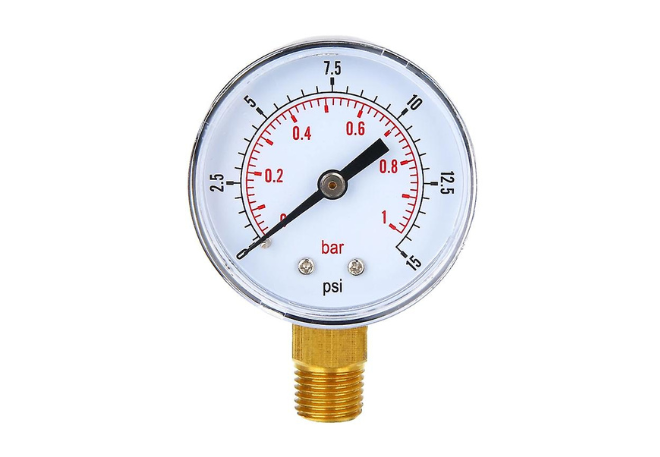What Are Pluggable Terminal Blocks and Why Are They Essential in Modern Electrical Systems?
Pluggable terminal blocks have transformed the way electrical connections are made in control systems, automation equipment, and power distribution setups. They provide a reliable, modular, and efficient method for connecting and disconnecting electrical wires without requiring extensive rewiring. This blog explores everything you need to know about pluggable terminal blocks—what they are, how they work, where they are used, and why they matter in today’s advanced electrical applications.
What Are Pluggable Terminal Blocks?
Pluggable terminal blocks are modular, reconfigurable connectors used to terminate wires in electrical systems. Unlike traditional fixed terminal blocks, pluggable versions feature male and female connectors that allow quick and secure plug-in connections. These are especially useful in applications requiring frequent changes, servicing, or expansions.
How Do Pluggable Terminal Blocks Work?
Pluggable terminal blocks operate through a plug-and-socket mechanism. The base (female terminal) is fixed onto a printed circuit board (PCB) or DIN rail, while the plug (male terminal) is attached to the wire. The two parts fit together, forming a secure and vibration-resistant electrical contact.
Why Choose Pluggable Terminal Blocks?
Pluggable terminal blocks offer significant advantages for manufacturers, installers, and maintenance professionals. Their modular nature simplifies installation and reduces time spent on system upgrades and troubleshooting.
Where Are Pluggable Terminal Blocks Commonly Used?
Pluggable terminal blocks are found across a range of industries due to their adaptability and safety features.
Industrial Automation
- Simplifies control cabinet wiring and redesigns
- Enables quick replacement of faulty components
- Reduces downtime during maintenance
Building Management Systems
- Ensures clean and safe wiring for HVAC and lighting controls
- Supports modular expansion in smart building infrastructures
Renewable Energy Systems
- Enhances connectivity in solar inverters and wind turbines
- Provides robust performance in harsh environments
Transportation and Railways
- Ideal for complex signal and power distribution systems
- Withstands vibration and thermal variation in vehicles
Consumer Electronics and Appliances
- Allows compact and reliable internal wiring
- Offers easy module replacement for servicing
What Are the Key Features of Pluggable Terminal Blocks?
Pluggable terminal blocks are designed to meet both mechanical and electrical demands. Below are some of the core attributes that make them so effective:
Modular Design
- Allows easy expansion or changes without rewiring
- Simplifies troubleshooting and testing processes
Secure Locking Mechanism
- Prevents accidental disconnection in high-vibration environments
- Provides reliable electrical contact and long-term durability
Wide Range of Wire Sizes
- Compatible with various wire gauges and conductor types
- Supports flexible and solid wires with equal ease
PCB and DIN Rail Mounting Options
- Offers installation flexibility for different use cases
- Saves space in control panels and enclosures
Colour Coding and Marking Options
- Facilitates accurate and organised wiring
- Enhances system diagnostics and maintenance
What Are the Different Types of Pluggable Terminal Blocks?
Pluggable terminal blocks come in a variety of configurations to suit different electrical and mechanical requirements.
Screw Clamp Terminal Blocks
- Use screw-driven clamps for wire fastening
- Ensure strong mechanical hold and high current capacity
Spring Clamp Terminal Blocks
- Feature push-in technology for tool-free connections
- Enable faster installation with consistent contact pressure
Push-in Terminal Blocks
- Provide a simple push-to-connect method
- Ideal for applications requiring high-speed assembly
Barrier Terminal Blocks
- Include insulated barriers between terminals for safety
- Commonly used in high-voltage or industrial control systems
What Are the Benefits of Using Pluggable Terminal Blocks?
Pluggable terminal blocks offer practical and financial benefits, making them a wise choice in modern installations.
- Reduce wiring time and labour costs
- Support modular system design and future expansions
- Enable easy testing and maintenance
- Improve safety and prevent wiring errors
-
Deliver reliable connections in harsh and dynamic environments
What Factors Should You Consider Before Selecting a Pluggable Terminal Block?
Choosing the right pluggable terminal block is essential for optimal performance and safety. Consider the following criteria when making a selection:
- Voltage and Current Rating – Match the terminal block to your circuit's electrical load
- Wire Size Compatibility – Ensure it accommodates the type and size of conductor used
- Environmental Conditions – Assess tolerance to vibration, temperature, and moisture
- Mounting Requirements – Decide between PCB or DIN rail options based on application
- Connection Type – Choose from screw, spring, or push-in mechanisms depending on speed and reliability needs
How Do Pluggable Terminal Blocks Improve Efficiency?
In high-volume manufacturing, time equals money. Pluggable terminal blocks allow pre-wiring of parts or modules, which can be tested independently before final assembly. This reduces onsite wiring complexity and speeds up commissioning.
- Enable off-site pre-assembly
- Reduce errors during installation
- Improve modular system integration
- Minimise maintenance time and costs
How Do They Compare to Traditional Terminal Blocks?
Compared to fixed terminal blocks, pluggable versions offer superior flexibility and accessibility. While traditional blocks may cost less initially, pluggable types reduce long-term expenses by slashing installation and downtime costs.
- Faster installation and removal
- More adaptable for system upgrades
- Easier replacement of faulty sections
- Less risk of wiring errors or mismatched connections
Conclusion
Pluggable terminal blocks are an innovative solution to the ever-increasing complexity of electrical and automation systems. With their user-friendly design, reliable performance, and modular flexibility, these components are becoming a staple in modern electrical infrastructure. Whether you're managing a smart building, setting up an industrial control system, or developing renewable energy equipment, integrating pluggable terminal blocks is a smart, future-ready move.
Their advantages in installation speed, maintenance simplicity, and system scalability make them indispensable across a wide array of industries. Selecting the right type, considering application-specific factors, and understanding their long-term benefits can significantly elevate the efficiency and reliability of your electrical projects.




Comments
Post a Comment